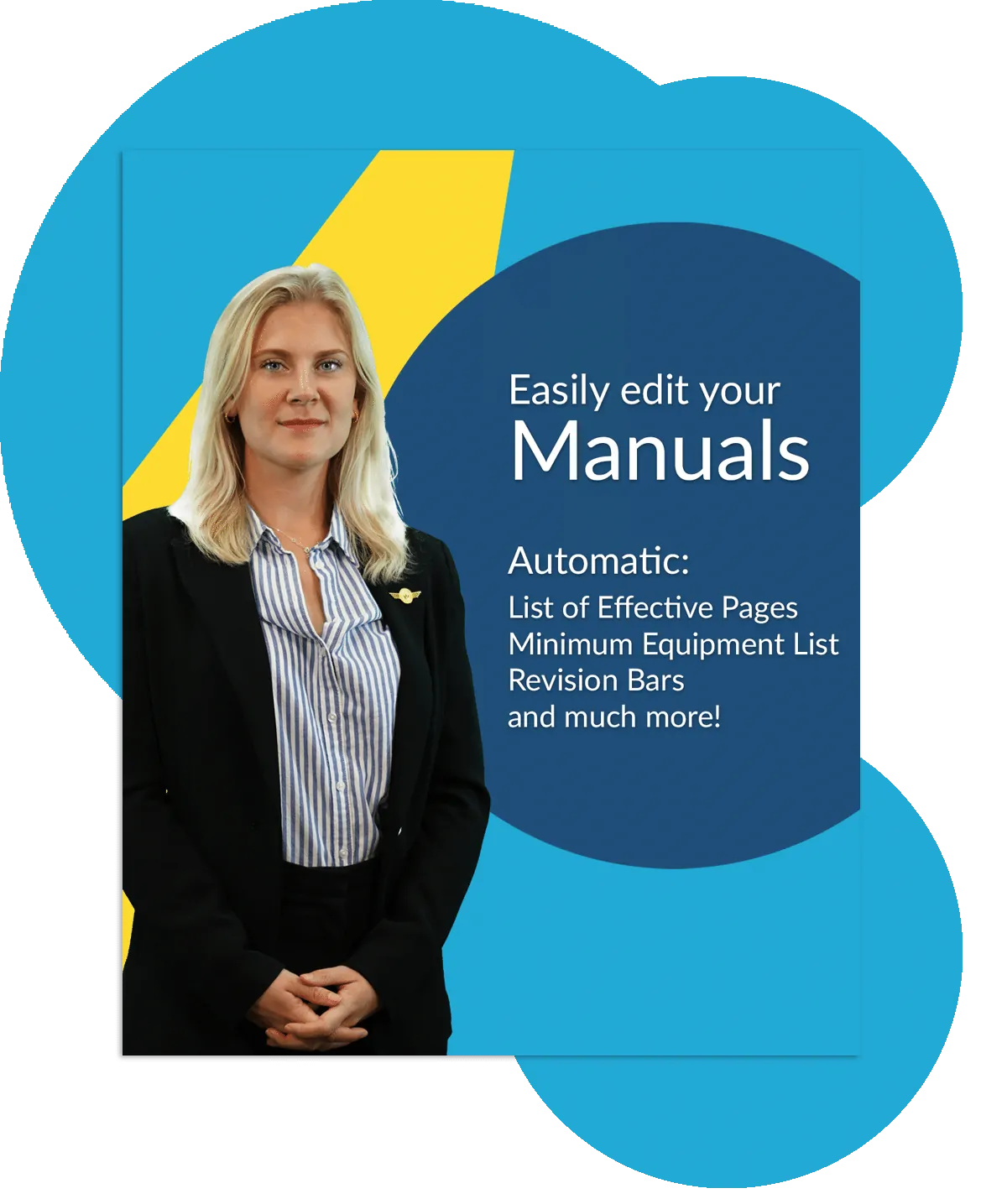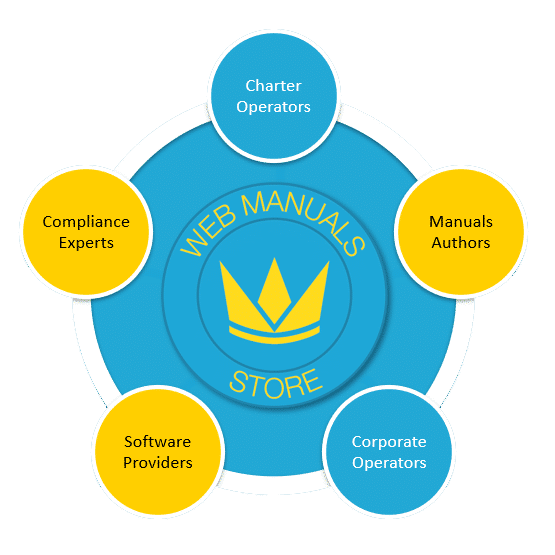The Editor
Write Aviation Manuals Simple Editing, Full Control
To edit and write aviation manuals has never been easier. Experience easy online collaboration, controlled authoring and automatic modules.
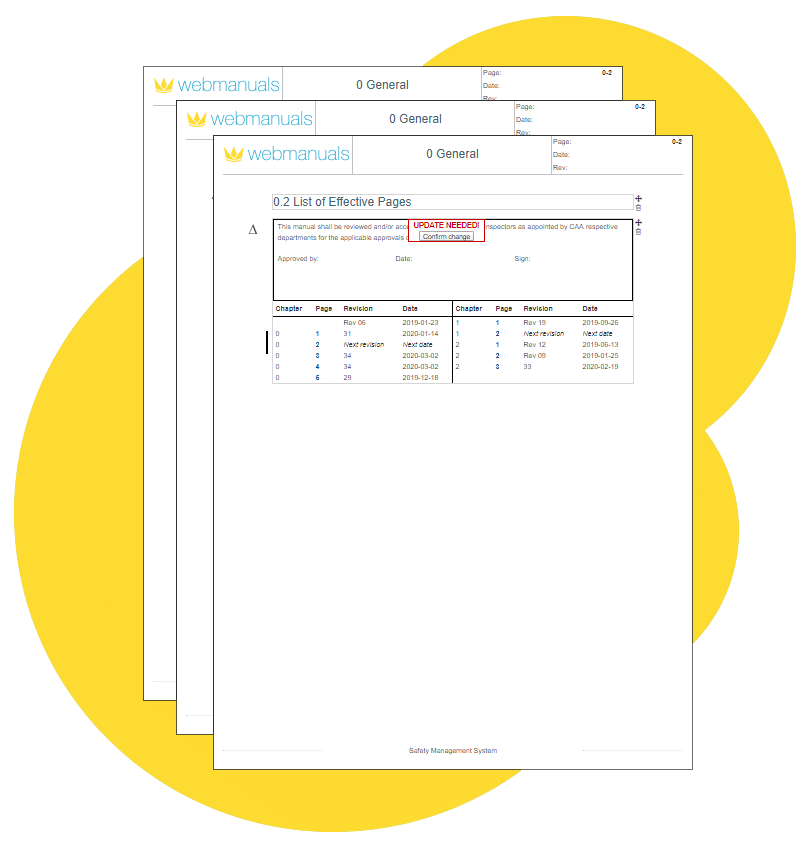
Controlled Authoring
Online Collaboration
Revision Tracking
Smart Modules
THE EDITOR
Simple Editing, Full Control
“Web Manuals allows us to save hours and hours of work for each revision. We save up to almost 70% of the time we used to spent on all of this before we introduced Web Manuals” – Compliance Monitoring at CityJet
Controlled Authoring
Set a standardized document standards for all manuals. Edit by sections to control formatting and page overflow.
Online Collaboration
Work with several people in the same document at the same time from anywhere in the world! No more sharing files back and forth.
Revision Tracking
Let the system keep track and report amendments with tools such as revision bars, change log and revision summary.
Smart Modules
Don't waste time on formatting. Choose between 12 smart modules such as automated LEPs and MELs when you write aviation manuals.
EDITOR HIGHLIGHTS
The Most Popular Smart Modules
Cross-References
Create cross-references between manuals and show dependencies in the most agile manner. Attach a list of all cross-references in your manual to comply with aviation regulations.
Content Mirroring
Upgrade how you write aviation manuals with content mirroring.
Connect manuals with identical information to never make duplicate amendments again.
Change Log
Instantly insert a change log with all of the latest amendments to your revision specified. These changes are also reflected with revision bars throughout your revised pages.
Minimum Equipment List
Add a standard formatted Minimum Equipment List table within seconds. No need to waste time formatting with our MEL smart module and responsive column widths.
List of Effective Pages
Instantly insert a change log with all of the latest amendments to your revision specified. These changes are also reflected with revision bars throughout your revised pages.
Revision Summary
Automatically create a record of revision with all the latest revisions and its dates listed, as requested by authorities when you write aviation manuals.
Smart Modules
Focus on What Matters When You Write Aviation Manuals
We believe quality people should do quality work. No more spending time on:
- Keeping track of list of effective pages (LEPs)
- Formatting minimum equipment lists (MELs)
- Creating cross-references between manuals
The automated smart modules lets you focus on the content related to your expertise instead of wasting time on editing details.
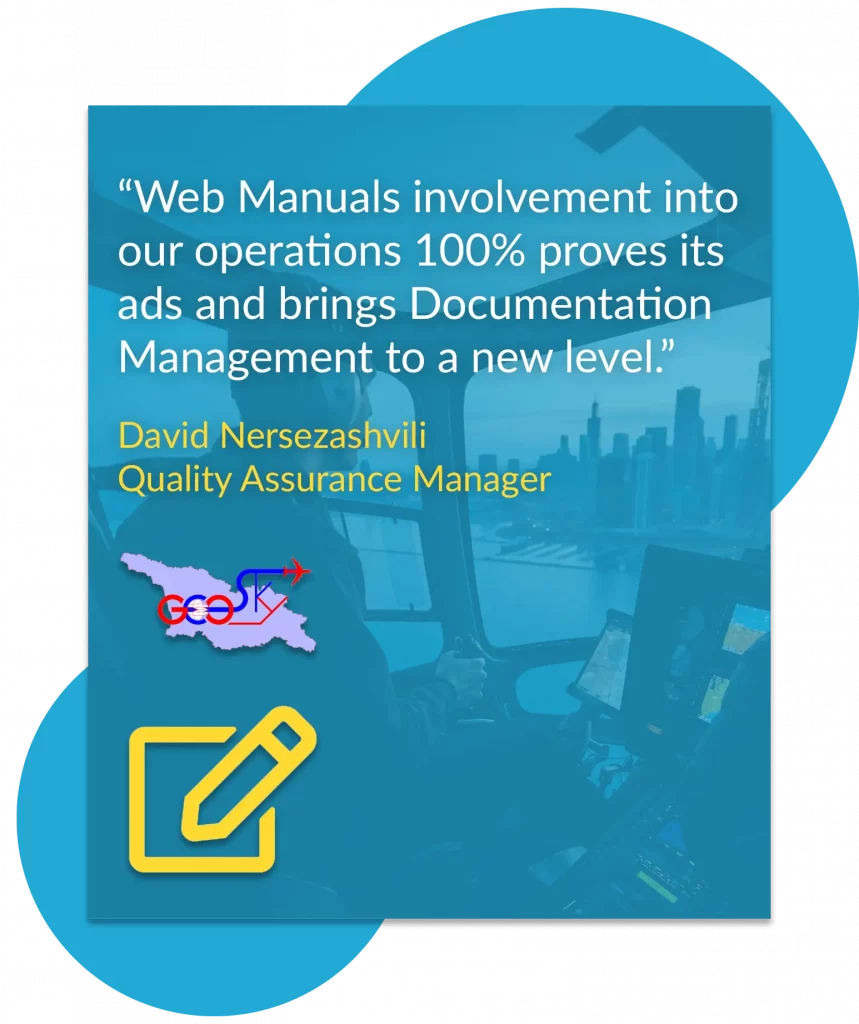
Smart Module
List of Effective Pages
With Web Manuals, you can create automatic List of Effective Pages by by simply dragging the smart module into the document. The LEP is automatically generated based on changes in the revision. Its design is standardized by default but can be easily customized.
Smart Module
Minimum Equipment List
Format a Minimum Equipment List, as set out by the authorities’ recommendations, with only a few clicks. The MEL columns and rows are automatically adjusted, keeping the design clear and structured at all times. Adding more rows is quick and easy.
Smart Module
Cross Referencing
Cross-referencing when you write aviation manuals with Web Manuals is effortless. Turn a reference into a link and navigate the reader straight to the referenced manual, chapter, or page. Insert a full list of cross-references in your manual with our smart module.
The Forms Manager
The Most Powerful Way To Create Forms When You Write Aviation Manuals
Easily create, distribute and submit forms to front line employees.
Customize Forms
Collect
Data
Offline Submission
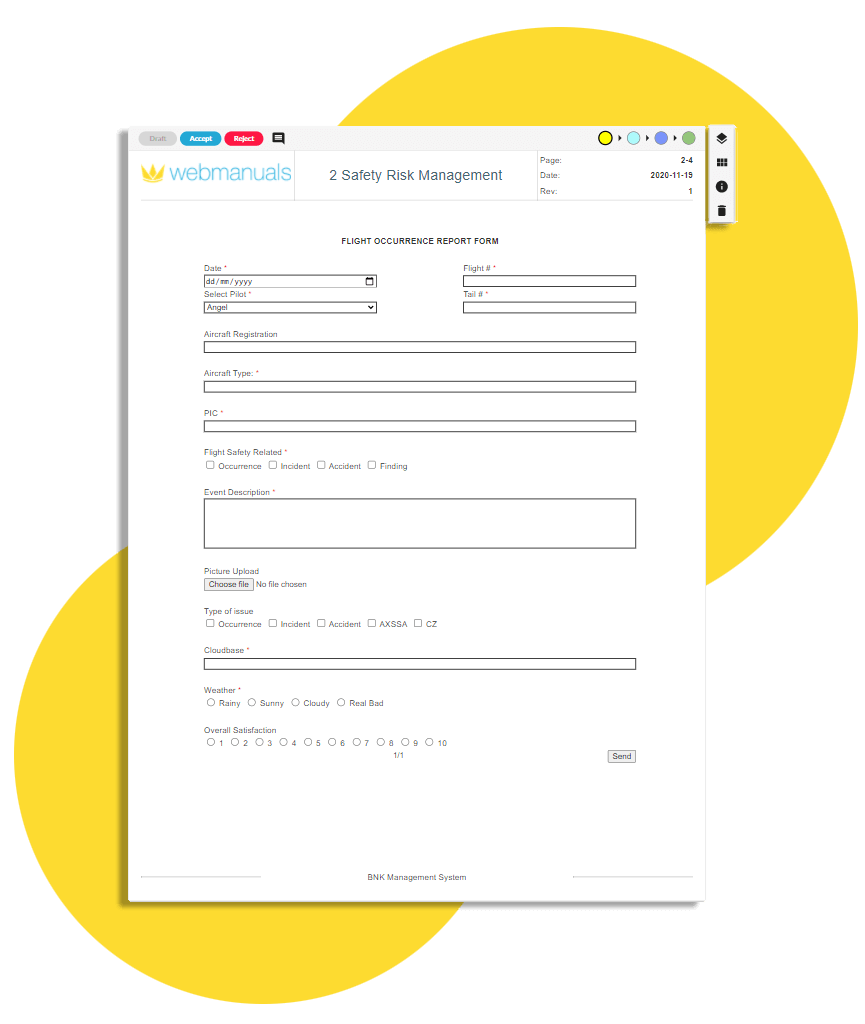
Template Manuals
No Time To Write Aviation Manuals From Scratch?
We also offer a variety of different template manuals such as:
- General Operations Manual (GOM)
- General Maintance Manual (GMM)
- Minimum Equipment List (MEL)
- Electronic Flight Bag (EFB)
All customers can easily access these through their customer portal. Template manuals can be added within any pricing plan.
Browse Web Manuals Store to see all available template manual options.

Book Your Demo Now!
Get a full demo on how to write aviation manuals in Web Manuals and let us answer questions specific to your operations.
